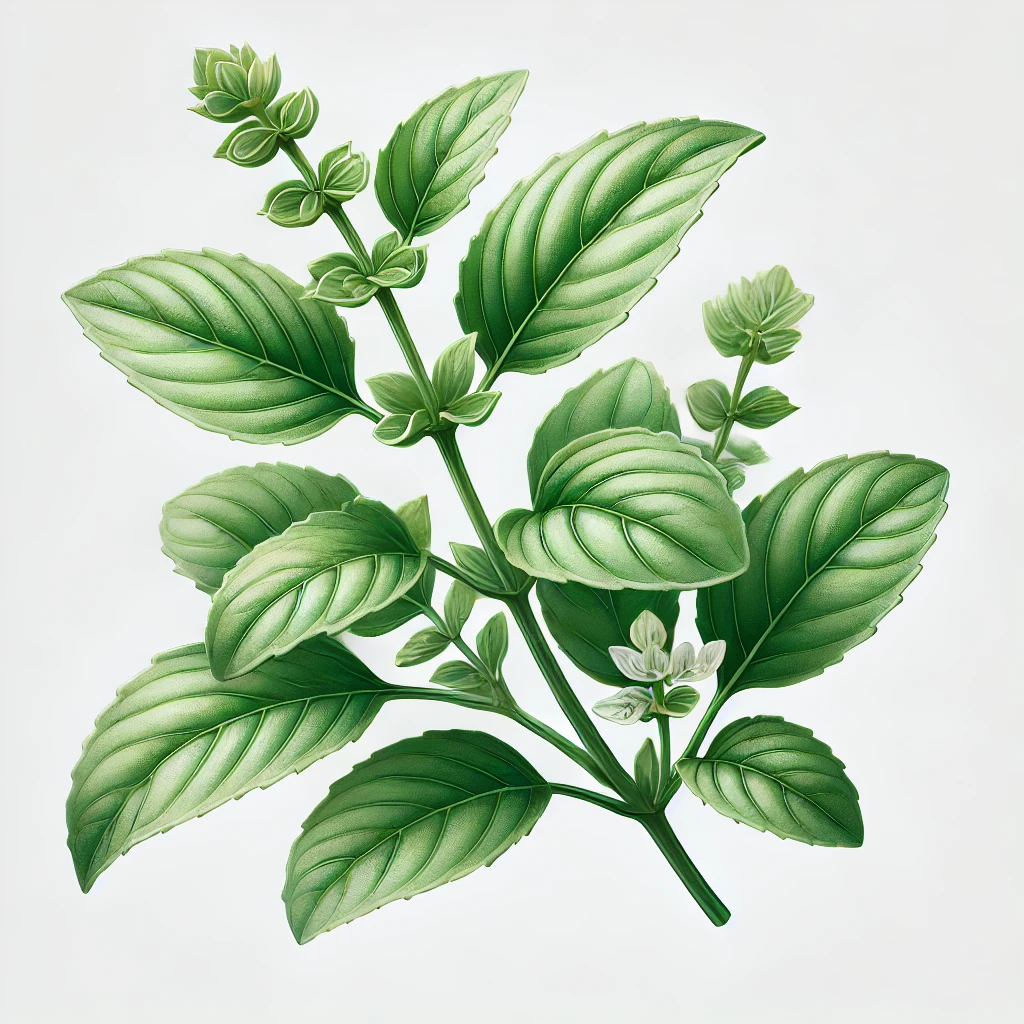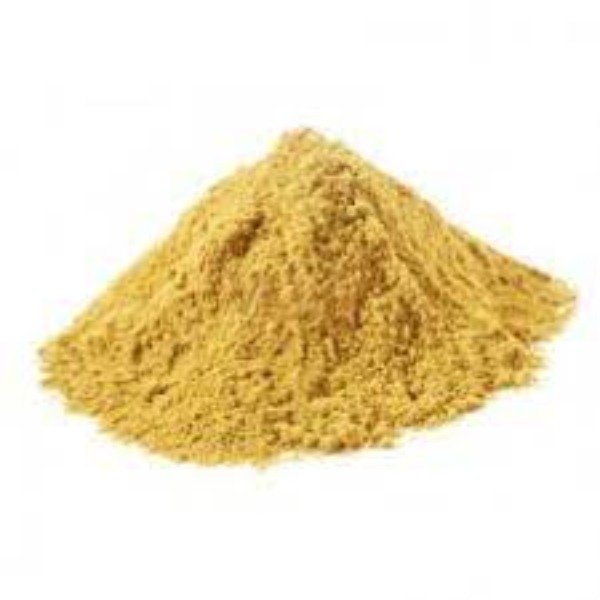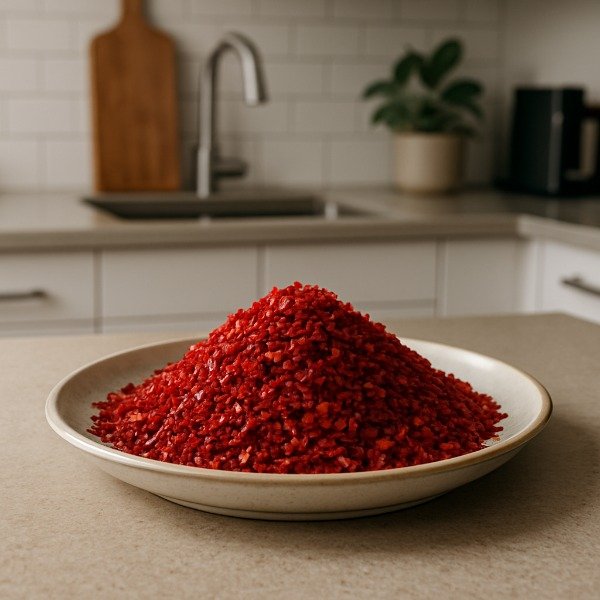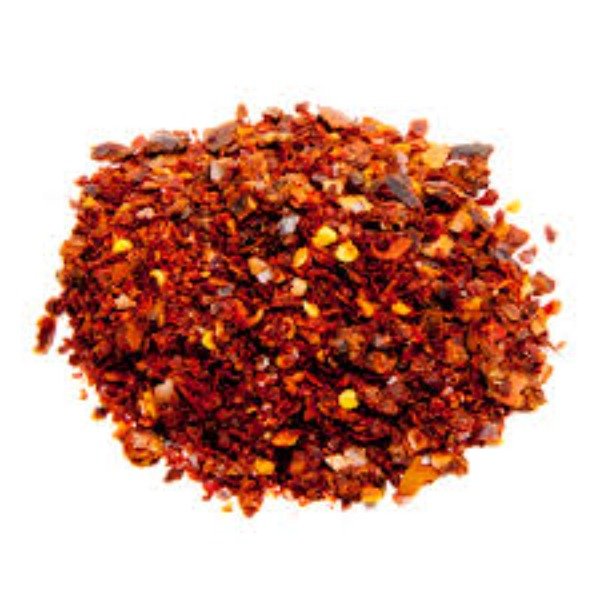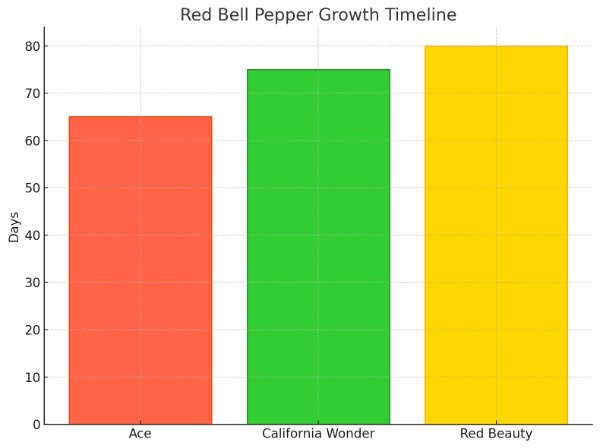9 Best Health Benefits of Red Capsicum Bell Peppers
Table of Contents
- Introduction
- Nutritional Profile of Red Capsicum Bell Peppers
- What Nutrients Are in Red Bell Peppers?
- How Do Red Bell Peppers Compare to Green or Yellow Peppers?
- Are Red Bell Peppers a Good Source of Vitamin C?
- What Antioxidants Are in Red Bell Peppers?
- How Many Calories Are in Red Bell Peppers?
- Are Red Bell Peppers Good for Weight Loss?
- Choosing the Best Peppers for Health
- Health Benefits of Red Capsicum Bell Peppers
- How Do Red Bell Peppers Support Immune Health?
- Can Red Bell Peppers Improve Eye Health?
- Do Red Bell Peppers Help Prevent Heart Disease?
- Are Red Bell Peppers Good for Skin Health?
- Incorporating Red Capsicum Bell Peppers into Your Diet
- How Can I Add Red Bell Peppers to My Meals?
- Can I Eat Red Bell Peppers Raw?
- Are Cooked Red Bell Peppers as Nutritious as Raw?
- How Do I Use Dried Red Bell Peppers for Health?
- Can I Use Frozen Red Bell Peppers in Healthy Recipes?
- Potential Risks and Considerations
- Can Red Bell Peppers Cause Allergies?
- Are Red Bell Peppers Safe for People with Acid Reflux?
- Can Red Bell Peppers Interact with Medications?
- How Much Red Bell Pepper Is Too Much?
- Are There Risks from Pesticides on Red Bell Peppers?
- Nutrient Comparison Chart
- Troubleshooting Dietary Concerns
- Recipes Using Red Capsicum Bell Peppers
- Conclusion
- FAQ
Introduction
Red capsicum bell peppers (Capsicum annuum), commonly known as sweet peppers or shimla mirch, are widely recognized not only for their vibrant red hue and naturally sweet flavor, but also for their impressive nutritional value. Rich in essential vitamins, powerful antioxidants, and dietary fiber, these versatile vegetables have earned a prominent place in kitchens across the globe, from Indian curries and Mexican salsas to New Zealand’s beloved stuffed peppers.
Whether you’re a health-focused individual in Sydney, a nutrition enthusiast in Mumbai, or a passionate home cook in London, red bell peppers offer a flavorful and accessible way to support overall wellness. Their benefits include enhanced immune function, improved heart health, and nourishment for skin vitality, making them a valuable addition to a balanced diet.
Nutritional Profile of Red Capsicum Bell Peppers
Understanding the nutritional content of red bell peppers is key to unlocking their health benefits. Below, we explore their nutrients, comparisons with other peppers, and dietary value for global audiences.
What Nutrients Are in Red Bell Peppers?
Red bell peppers are nutrient-dense. A medium red bell pepper (119g) contains approximately 25 calories, 6g carbohydrates, 2g fiber, 1g protein, 190mg vitamin C (211% DV), 3,000 IU vitamin A (60% DV), 0.2mg vitamin B6 (10% DV), and 0.4mg manganese (20% DV). They also provide small amounts of potassium, folate, and iron. The high vitamin C content supports immunity, while vitamin A promotes eye health.
How Do Red Bell Peppers Compare to Green or Yellow Peppers?
Red bell peppers are riper than green or yellow peppers, offering higher vitamin C (190mg vs. 120mg in green, 180mg in yellow per 119g) and vitamin A (3,000 IU vs. 600 IU in green, 1,200 IU in yellow) due to longer ripening. Green peppers, harvested earlier, have a slightly bitter taste and less sugar (2g vs. 4g in red). Yellow peppers fall in between for sweetness and nutrients. Red peppers’ antioxidant content (e.g., lycopene) is higher, making them ideal for heart health.
Are Red Bell Peppers a Good Source of Vitamin C?
Red bell peppers excel in vitamin C. A medium red bell pepper provides 190mg of vitamin C, over 200% of the daily value (DV), surpassing oranges (70mg per medium fruit). This supports collagen formation, immune function, and wound healing.
What Antioxidants Are in Red Bell Peppers?
Red bell peppers contain antioxidants like lycopene, beta-carotene, and quercetin. Lycopene, responsible for the red color, reduces inflammation and heart disease risk. Beta-carotene converts to vitamin A, supporting eye health, while quercetin has anti-inflammatory properties.
How Many Calories Are in Red Bell Peppers?
Red bell peppers are low-calorie. A medium red bell pepper has about 25 calories, making it ideal for weight management. With 2g of fiber and 4g of natural sugars, they’re filling yet light.
Are Red Bell Peppers Good for Weight Loss?
Red bell peppers support weight loss. Their low calories (25 per medium pepper), high fiber (2g), and water content (93%) promote satiety, reducing overeating. Capsaicin, in trace amounts, may boost metabolism slightly.
Choosing the Best Peppers for Health
Selecting high-quality red bell peppers maximizes benefits. Choose firm, glossy peppers with vibrant red color and no blemishes. Organic peppers reduce pesticide exposure. Store fresh peppers in the fridge for up to 2 weeks or freeze for 12 months to retain nutrients.
Health Benefits of Red Capsicum Bell Peppers
Red bell peppers may offer targeted health benefits, from immunity to heart health. Below, we explore how they support specific wellness goals:
How Do Red Bell Peppers Support Immune Health?
Red bell peppers may boost immunity. Their high vitamin C (190mg per medium pepper) enhances white blood cell production, strengthening defenses against infections. A 2020 Journal of Nutrition study linked high vitamin C intake to reduced cold duration. Vitamin A supports mucosal barriers, like those in the respiratory tract.
Can Red Bell Peppers Improve Eye Health?
Red bell peppers may protect vision. Vitamin A (3,000 IU) and beta-carotene support retinal health, reducing age-related macular degeneration risk. Lutein and zeaxanthin, found in trace amounts, filter blue light, protecting eyes.
A 2018 American Journal of Ophthalmology study noted that carotenoid-rich foods lower vision loss risk.
Do Red Bell Peppers Help Prevent Heart Disease?
Red bell peppers may promote cardiovascular health. Lycopene and fiber reduce LDL cholesterol and inflammation, lowering heart disease risk.
Are Red Bell Peppers Good for Skin Health?
Red bell peppers may enhance skin vitality. Vitamin C supports collagen production, improving skin elasticity and reducing wrinkles. Lycopene and beta-carotene protect against UV damage, per a 2021 Journal of Cosmetic Dermatology study.
Incorporating Red Capsicum Bell Peppers into Your Diet
Adding red bell peppers to your meals is easy and versatile. Below, are the answer how to include them, whether raw, cooked, dried, or frozen, for maximum health benefits.
How Can I Add Red Bell Peppers to My Meals?
Red bell peppers fit any cuisine. Add them to salads, stir-fries, soups, or sandwiches for crunch and nutrition. Roast for smoky flavor in Mediterranean dips or stuff with grains for New Zealand-style meals. In India, include in shimla mirch curry with spices. Dice raw peppers for Australian salads or blend into smoothies. A London cook might add sliced peppers to omelets, while a Toronto dieter tosses them into quinoa bowls for a nutrient boost.
Can I Eat Red Bell Peppers Raw?
Yes, you can eat red bell peppers raw, retaining maximum vitamin C and antioxidants. Their crisp texture suits salads, snacks, or dips like hummus. Rinse thoroughly to remove pesticides, especially for non-organic peppers, and slice thinly for easier chewing.
Are Cooked Red Bell Peppers as Nutritious as Raw?
Cooking affects nutrients. Cooked red bell peppers retain most nutrients, but vitamin C drops by 20-30% when heated. Lycopene becomes more bioavailable when cooked. Roasting or steaming preserves more nutrients than boiling.
How Do I Use Dried Red Bell Peppers for Health?
Dried peppers are nutrient-packed. Rehydrate dried red bell peppers in warm water for 20-30 minutes for soups or stews, or grind into powder for seasoning. They retain antioxidants but lose some vitamin C.
Can I Use Frozen Red Bell Peppers in Healthy Recipes?
Yes, frozen red bell peppers work in healthy recipes, retaining most nutrients for 12 months if blanched. Add directly to stir-fries, soups, or curries without thawing.
Potential Risks and Considerations
While red capsicum bell peppers are generally safe, some considerations apply. Below are the potential risks for specific diets and health conditions.
Can Red Bell Peppers Cause Allergies?
Red bell peppers may cause allergies in people sensitive to nightshades or pollen (cross-reactivity). Symptoms include itching, swelling, or digestive discomfort. Consult a doctor if symptoms occur.
Are Red Bell Peppers Safe for People with Acid Reflux?
Red bell peppers are low in acid, making them safer for acid reflux than spicy peppers, but they may irritate some.
Can Red Bell Peppers Interact with Medications?
Red bell peppers rarely interact with medications, but their high vitamin K (5μg per pepper) may affect blood thinners like warfarin if consumed in large amounts. Consult a doctor for personalized advice.
How Much Red Bell Pepper Is Too Much?
Moderation is key. Eating 1 medium red bell peppers daily (119-238g) is safe for most, providing ample nutrients without excess. Overconsumption may cause digestive upset due to fiber.
Are There Risks from Pesticides on Red Bell Peppers?
Non-organic red bell peppers may carry pesticide residues. Wash thoroughly or choose organic.
Nutrient Comparison Chart
This chart compares key nutrients in red, green, and yellow bell peppers (per 119g), helping you choose the healthiest option.
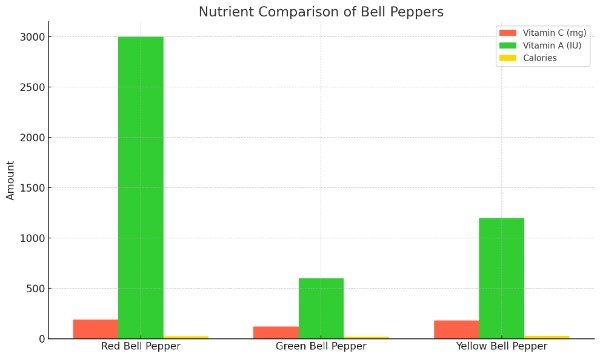
Red bell peppers lead in vitamin C and A, ideal for immunity and eye health, while green peppers are lowest in calories.
Overcoming Common Concerns When Adding Red Bell Peppers to Your Diet
While red bell peppers offer numerous health benefits, some individuals may have concerns when incorporating them into their daily meals. Here are practical solutions to address common issues:
- Digestive Sensitivity:
Red bell peppers are rich in dietary fiber, which can sometimes cause bloating or discomfort, especially if you’re not used to high-fiber foods. To ease digestion, start with a small portion (about half a pepper) and be sure to chew thoroughly. - Nightshade Intolerance:
Red bell peppers belong to the nightshade family, along with tomatoes, eggplants, and potatoes. If you have a known sensitivity or intolerance to nightshades, it’s best to avoid them or consult a healthcare provider before including them in your diet. - Pesticide Residue:
As with many fruits and vegetables, conventionally grown bell peppers may carry pesticide residues. To reduce exposure, wash them thoroughly in a vinegar-water solution or choose organic peppers whenever possible. - Strong Flavor Profile:
If the naturally sweet yet bold flavor of raw red bell peppers is too intense for your taste, consider roasting or grilling them. Cooking mellows their flavor and brings out a rich, caramelized sweetness that many people find more palatable.
By making small adjustments, you can enjoy the nutritional benefits of red bell peppers without discomfort, whether you’re new to them or reintroducing them into your meals.
Recipes Using Red Capsicum Bell Peppers
Red bell peppers bring vibrant flavor, color, and nutrition to any dish, making them a smart choice for healthy cooking. Packed with vitamin C and antioxidants, they shine in a variety of global recipes that cater to diverse dietary needs. Below are five delicious and wholesome ways to enjoy them around the world.
1. Indian Shimla Mirch Salad
A light, refreshing salad that highlights the crisp sweetness of red bell peppers. Packed with vitamin C and bursting with tangy flavor, it’s perfect as a side or a healthy snack.
Ingredients:
- 1 red bell pepper, diced
- 1 cucumber, thinly sliced
- 1 tsp fresh lemon juice
- ½ tsp chaat masala
- Salt to taste
Instructions:
In a mixing bowl, combine all ingredients and toss gently to coat evenly. Chill for 10–15 minutes before serving for enhanced flavor.
Nutrition (per serving):
- Calories: ~30 kcal
- Vitamin C: ~190 mg
Tip:
Add a sprinkle of fresh coriander or mint for an extra layer of freshness.
2. New Zealand Roasted Red Pepper Soup
A heart-healthy, antioxidant-rich soup perfect for cozy winter evenings. Smooth, smoky, and satisfying, this simple recipe is a comforting favorite.
Ingredients:
- 2 red bell peppers, roasted
- 2 cups vegetable broth
- 1 garlic clove
- 1 tsp olive oil
Instructions:
Roast red bell peppers at 400°F (204°C) for about 15 minutes until the skins blister. Allow to cool slightly, then peel off the skins. Blend the roasted peppers with vegetable broth and garlic until smooth. Heat gently in a saucepan with olive oil, stirring until warmed through.
Nutrition (per serving):
- Calories: ~100 kcal
- Rich in lycopene and antioxidants
Tip:
- Garnish with a swirl of coconut cream or a few fresh basil leaves for added flavor and flair.
3. Australian Red Pepper Smoothie
A vibrant, antioxidant-packed smoothie to kickstart your day. This nutrient-rich drink is loaded with vitamin C, vitamin A, and natural sweetness, perfect for breakfast on the go.
Ingredients:
- 1 red bell pepper, chopped
- 1 cup mixed berries (fresh or frozen)
- ½ cup plain yogurt (or plant-based alternative)
- 1 tsp honey (optional, for sweetness)
Instructions:
Blend all ingredients together until smooth and creamy. Serve chilled for a refreshing, energizing start to your morning.
Nutrition (per serving):
- Calories: ~150 kcal
- High in vitamin C and vitamin A
Tip:
- Add a few ice cubes or a splash of orange juice for an extra cooling touch.
4. Mediterranean Red Pepper Dip
A creamy, flavor-rich dip that’s as nutritious as it is delicious. Packed with antioxidants and skin-supporting nutrients, this Mediterranean-inspired spread pairs perfectly with fresh vegetables or whole-grain crackers.
Ingredients:
- 2 roasted red bell peppers
- ½ cup Greek yogurt
- 1 garlic clove
- 1 tsp lemon zest
Instructions:
- Blend all ingredients until smooth and creamy. Chill for 10–15 minutes to allow flavors to meld. Serve with sliced cucumbers, carrots, or pita wedges.
Nutrition (per serving):
- Calories: ~80 kcal
- Rich in antioxidants, supports skin and immune health
Tip:
For a dairy-free version, substitute Greek yogurt with blended silken tofu or a plant-based yogurt alternative.
5. Low-Calorie Capsicum Stir-Fry
A quick, fiber-rich stir-fry that’s light, vegan, and packed with flavor. Perfect for weight-conscious meals without compromising on taste or nutrition.
Ingredients:
- 1 red bell pepper, thinly sliced
- 1 zucchini, sliced into half-moons
- 1 tbsp soy sauce (low-sodium preferred)
- 1 tsp sesame oil
Instructions:
Heat sesame oil in a non-stick pan over medium heat. Add red bell pepper and zucchini; stir-fry for 4–5 minutes until just tender. Add soy sauce and toss to coat. Serve warm, on its own or over steamed rice.
Nutrition (per serving):
- Calories: ~120 kcal
- High in fiber, supports digestion and healthy weight management
Tip:
Add a sprinkle of sesame seeds or chili flakes for extra texture and flavor.
Conclusion
Red capsicum bell peppers are a flavorful and nutrient-dense addition to any balanced diet. Rich in antioxidants, vitamins, and fiber, they offer a wide range of health benefits, from strengthening the immune system to supporting heart health. Whether added to salads, blended into smoothies, or simmered into soups, red bell peppers deliver low-calorie nourishment with bold, natural sweetness. Start including them in your meals today to enjoy a healthier, more vibrant lifestyle.
Frequently Asked Questions (FAQ)
Q: What nutrients are found in red bell peppers?
Red bell peppers are rich in essential nutrients. A medium pepper contains approximately:
- Vitamin C: 190 mg (over 200% of the Daily Value)
- Vitamin A: 3,000 IU (primarily as beta-carotene)
- Fiber: 2 grams
- Additional nutrients: Small amounts of potassium, folate, vitamin B6, and iron
Q: How do red bell peppers compare to green or yellow peppers?
A: Red bell peppers are fully ripened, which gives them a sweeter taste and higher nutritional value compared to green or yellow varieties. They contain significantly more vitamin C and vitamin A than green peppers due to the extended ripening process.
Q: Are red bell peppers a good source of vitamin C?
A: Absolutely. A single medium red bell pepper provides about 190 mg of vitamin C, which is more than 200% of the recommended daily intake, making it one of the best natural sources of this vital antioxidant.
Q: What antioxidants are in red bell peppers?
A: Red bell peppers contain powerful antioxidants including lycopene, beta-carotene, quercetin, and lutein. These compounds help combat inflammation, reduce oxidative stress, and may lower the risk of heart disease and certain chronic conditions.
Q: How many calories are in red bell peppers?
A: A medium red bell pepper contains approximately 25 calories, making it an excellent low-calorie option for weight-conscious diets.
Q: Are red bell peppers good for weight loss?
A: Yes. Their low calorie content combined with high fiber promotes a feeling of fullness, helping to curb hunger and support healthy weight management.
Q: How do red bell peppers support immune health?
A: The high vitamin C content in red bell peppers enhances immune function by stimulating white blood cell production and strengthening the body’s natural defenses against illness.
Q: Can red bell peppers improve eye health?
A: Absolutely. Red bell peppers are rich in vitamin A, lutein, and zeaxanthin—nutrients that help protect the eyes from oxidative damage and may reduce the risk of age-related vision problems such as macular degeneration.
Q: Do red bell peppers help prevent heart disease?
A: Yes. Red bell peppers are rich in lycopene and dietary fiber, both of which contribute to heart health. Lycopene helps reduce inflammation and oxidative stress, while fiber supports healthy cholesterol levels—together lowering the risk of cardiovascular disease.
Q: Are red bell peppers good for skin health?
A: Yes. The high vitamin C content supports collagen production, which is essential for firm, youthful skin. In addition, the antioxidants in red bell peppers help protect the skin from oxidative damage caused by sun exposure and environmental stressors.
Q: How can I add red bell peppers to my meals?
A: Red bell peppers are incredibly versatile. Add them to fresh salads, stir-fries, soups, or smoothies to boost both flavor and nutrition. They can also be roasted, grilled, or stuffed for more creative and satisfying dishes.
Q: Can I eat red bell peppers raw?
A: Yes, red bell peppers can be enjoyed raw and are an excellent option for healthy snacking. Eating them raw preserves their maximum vitamin C content and maintains their natural crunch and sweetness.
Q: Are cooked red bell peppers as nutritious as raw?
A: Cooking red bell peppers slightly reduces their vitamin C content due to heat sensitivity. However, it enhances the bioavailability of lycopene, a powerful antioxidant that becomes more effective when heated—making both raw and cooked peppers beneficial in different ways.
Q: How do I use dried red bell peppers for health?
A: Dried red bell peppers are a convenient and nutrient-rich pantry item. You can rehydrate them in warm water for use in soups, stews, and sauces, or grind them into powder to use as a flavorful seasoning that retains much of the original pepper’s antioxidant power.
Q: Can I use frozen red bell peppers in healthy recipes?
A: Yes. Frozen red bell peppers retain most of their nutrients and are ideal for cooked dishes like stir-fries, casseroles, or soups. Once thawed, they can also be blended into dips, sauces, or smoothies for added flavor and nutrition.
Q: Can red bell peppers cause allergies?
A: While uncommon, allergies to red bell peppers can occur, particularly in individuals sensitive to nightshade vegetables (like tomatoes, eggplants, or potatoes). If you’re unsure, start with a small amount and monitor for any reaction.
Q: Are red bell peppers safe for people with acid reflux?
A: Generally, red bell peppers are considered mild and non-acidic, making them safe for most individuals with acid reflux. However, it’s best to consume them in moderate portions to avoid potential irritation, as individual sensitivities can vary.
Q: Can red bell peppers interact with medications?
A: Red bell peppers pose minimal risk of interaction with most medications. However, they contain a small amount of vitamin K, which may interfere with blood-thinning medications like warfarin if consumed in large quantities. Always consult your healthcare provider if you’re on medication.
Q: How much red bell pepper is too much?
A: Eating 1–2 red bell peppers per day is generally safe and beneficial. Consuming excessive amounts may lead to digestive discomfort, such as bloating or gas, due to their fiber content.
Q: Are there risks from pesticides on red bell peppers?
A: Like many conventionally grown vegetables, red bell peppers may contain pesticide residues. To reduce exposure, wash them thoroughly under running water or with a vinegar rinse. For added safety, consider purchasing organic peppers when possible.
Sources: Nutrients (2021), Journal of Nutrition (2020), American Journal of Ophthalmology (2018), European Heart Journal (2022), Journal of Cosmetic Dermatology (2021), Food Chemistry (2020), Allergy (2019), Gastroenterology (2021), Environmental Working Group (2023).









